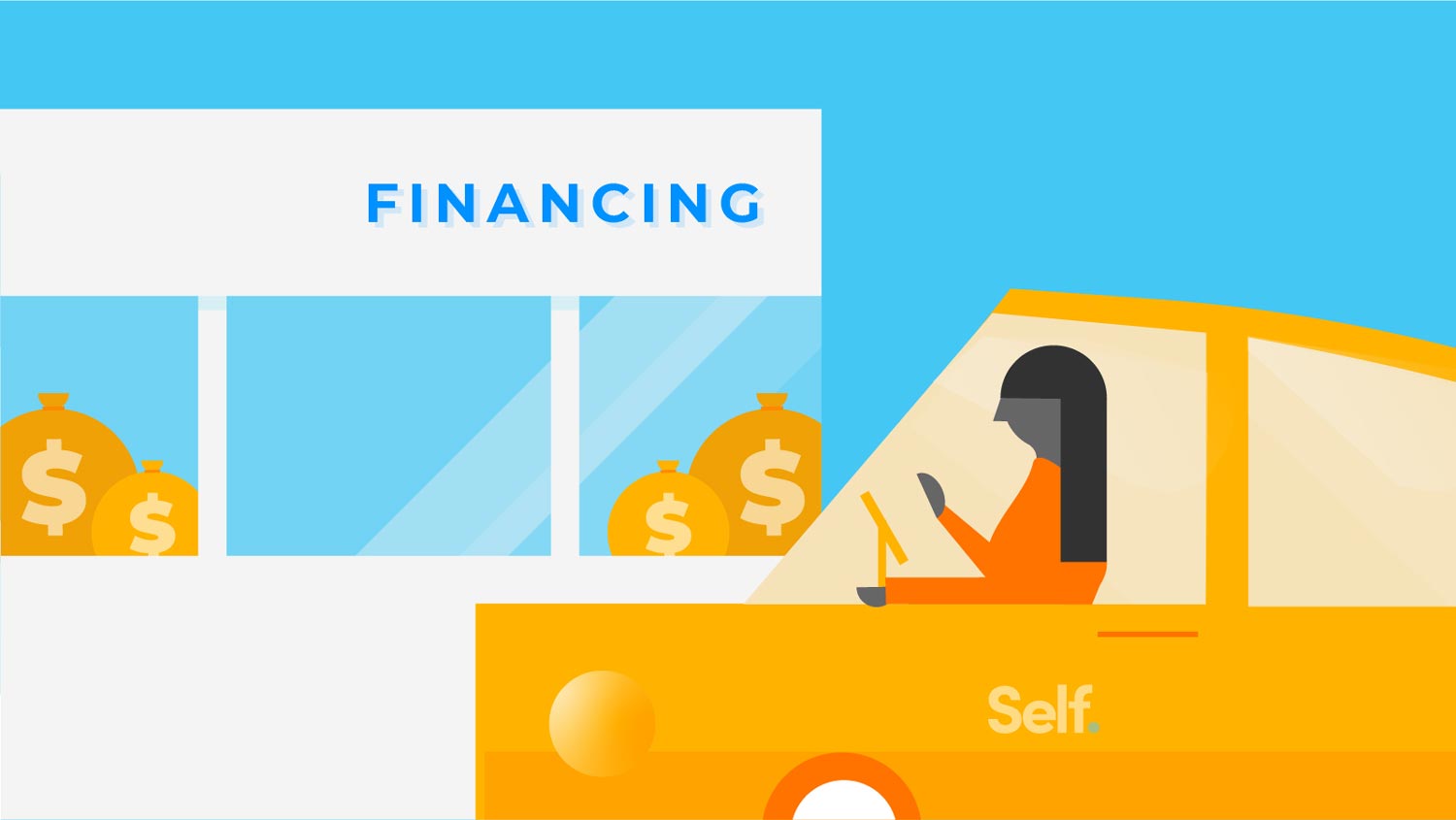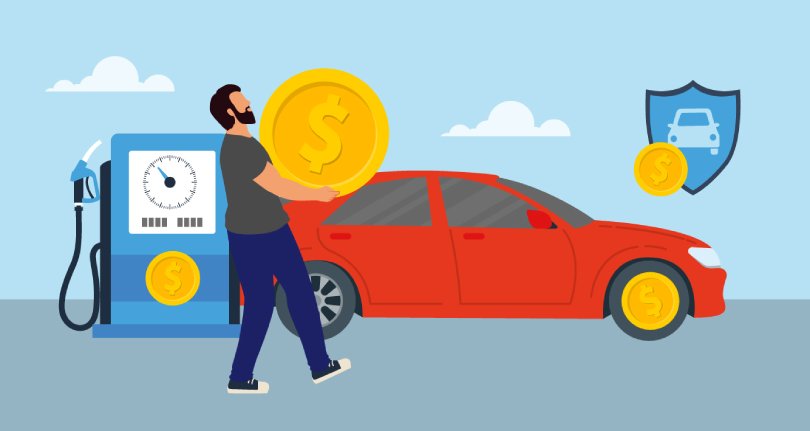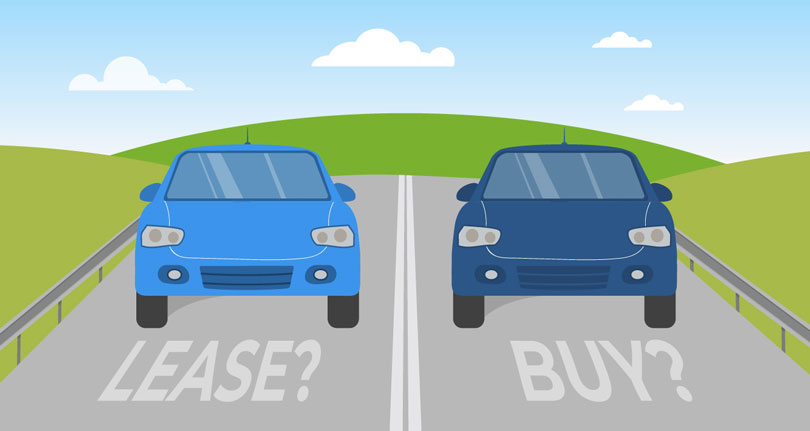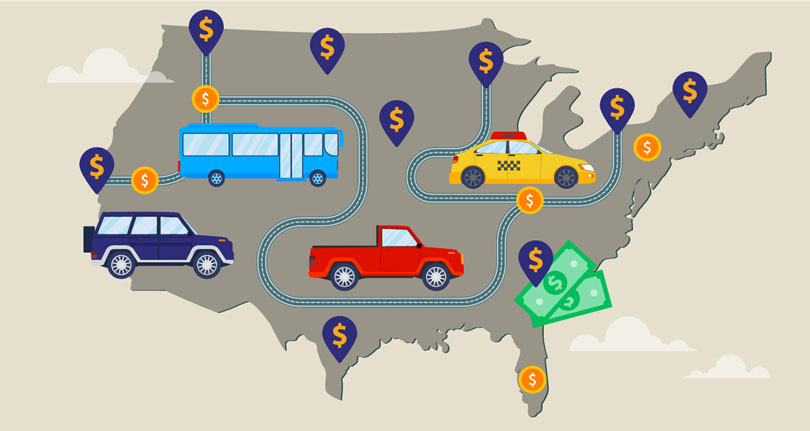
Buying a car is a big decision – and it’s an expensive one, too.
According to Car Edge, the average price of a new car is $47,244. [1] Car Edge, “New Car Price Trends in 2024” - Accessed April 2024 https://caredge.com/guides/new-car-price-trends-in-2024 You can save some money by buying a used car; the average cost of a used car was $25,540 and has been steadily declining since the start of 2024. [2] Kelley Blue Book, “Is Now the Time to Buy, Sell or Trade-in a Car?” - Accessed April 2024 https://www.kbb.com/car-advice/is-now-the-time-to-buy-sell-or-trade-in-a-used-car/
Figuring out how you’re going to finance such a major purchase can feel complicated, so. Here are a few things to know about how to get a car loan in 2024 and what you should do before you apply.
Car loans start with your credit score
While there’s no minimum credit score to buy a car, your credit rating is an important factor in getting approved for a car loan and determining the interest rate you’ll pay on that loan.
Borrowers with subprime credit – defined by Experian’s Automotive Finance Report as a credit score below 600 – typically have a harder time getting approved for car financing. Experian reports that roughly 12.6% of U.S. consumers at the end of 2023 have a FICO Score in the “Poor” range (300 – 579). [3] Experian, “How Many Americans Have an 800 Credit Score?” - Accessed May 2024 https://www.experian.com/blogs/ask-experian/how-many-americans-have-800-credit-score/
Car loan rates by credit score
While the actual rates available vary by lender, the table below shows the average auto loan rate for new and used car loans based on credit scores, according to Experian data from the fourth quarter of 2023. [4] Experian, “State of the Automotive Finance Market Report Q4 2023” https://www.experian.com/content/dam/noindex/na/us/automotive/finance-trends/experian-safm-q4-2023.pdf
| Credit Score Range | New Car Loan Rates | Used Car Loan Rates |
|---|---|---|
| 781 to 850 | 5.64% | 7.66% |
| 661 to 780 | 7.01% | 9.73% |
| 601 to 660 | 9.60% | 14.12% |
| 501 to 600 | 12.28% | 18.89% |
| 300 to 500 | 14.78% | 21.55% |
How to check your credit score
If you’ll be in the market for a new (or new to you) car soon, it’s a good idea to check your credit score so you’ll know what to expect when you apply for a car loan.
There are several ways to check your credit score for free. Many credit card companies, banks and other lenders have started providing credit scores for their customers. If your financial institution provides this service, check your most recent statement, or access your credit score online by logging into your account.
However, the credit score you see may not be the credit score your auto lender will use.
That’s because many auto lenders use an industry-specific FICO Auto Score (See our article about the credit scores car dealers use). FICO Auto Scores were created specifically for auto lenders. They start with your generic FICO Score but then alter it to better predict the likelihood that you will repay an auto loan on time. Your history with auto loans is especially important in calculating your FICO Auto Score.
One way to get your FICO Auto Score is directly from myFICO.com. The report costs $19.95 (for a one-credit bureau report) or $59.85 (for reports from all three credit bureaus), but each report includes all versions of your FICO credit score. However, depending on your credit situation, you may not need to pay for this report.
How to get a car loan with no credit
If this is your first time getting approved for a car loan, you may not have much credit history – or any credit history at all.
According to data from Oliver Wyman, as of 2021, an estimated 28 million adults in the U.S. “credit invisible”. [5] Oliver Wyman, ‘Financial Inclusion and Access to Credit’ https://images.go.experian.com/Web/ExperianInformationSolutionsInc/%7B63ec9888-37ea-405c-b39d-7492de9143ce%7D_FINALExperian_report_14_01.pdf This means they don’t have a credit history with one of the nationwide credit reporting companies or have too little recent credit history to have a credit score.
Fortunately, it is possible to get a no-credit car loan. Auto dealers, banks, credit unions, and some online lenders offer car loans to people who have no credit score. If you have no credit history, though, you may need to make your application look more attractive by coming up with a larger down payment or getting a cosigner. [6] Credit Karma, “Can I Buy a Car With No Credit?” https://www.creditkarma.com/auto/i/buy-car-no-credit
How to get a car loan between 16 and 21 years old
If you’re under age 18, you legally can’t finance a car on your own or with a cosigner. Getting approved for a car loan requires signing a contract, and you have to be at least 18 years old to enter into a contract in the U.S legally.
If you’re at least 18 years old, you may be able to get an auto loan on your own, but a lack of credit history may limit your options. Most auto lenders prefer to loan money to people who’ve shown they can manage credit and have a history of on-time payments, but some specialize in working with people who have little or no credit.
In fact, you may qualify for special financing programs designed for first-time car buyers and students. These programs give more weight to other factors, such as your GPA, income, and down payment, when underwriting your loan application. Getting a first-time car buyer loan is similar to getting a loan when you have bad credit as they typically come with high interest rates. You can boost your chances of approval by paying a substantial down payment or having a cosigner. [7] MarketWatch, “First-Time Car Buyer Programs and Loans” https://www.marketwatch.com/guides/car-loans/first-time-car-buyer/

How to Get a Credit Card with No Credit
It’s possible to get a credit card with no credit, but you need to know which types of accounts to apply for (and which applications to avoid as well).
Download our guideHow to get a car loan with bad credit
Car loans for people who have bad credit exist, but those loans typically come with high interest rates. As noted in the table above, borrowers with a credit score below 500 pay an average interest rate of 21.55% when financing a used car. On a $15,000 loan, that rate would cost you $9,627 in interest over the course of a 60-month loan term. [8] Calculator.net, “Auto Loan Calculator” https://www.calculator.net/auto-loan-calculator.html
If possible, take steps to improve your credit before car shopping. Lifting your credit score just enough to get you out of the Deep Subprime category could save you thousands of dollars in interest over the life of the loan.
How to build your credit score for a car loan
If you want to build (or rebuild) credit before applying for an auto loan, consider the following tactics:
- Pay on time. According to FICO, a history of on-time payments is the single largest factor in calculating credit scores. So make an effort to pay credit cards and other loans on time, every time.
- Improve your credit utilization. Maxing out your credit card balance can usually result in a poor credit score. Try to keep your credit usage – the amount of credit you’re currently using divided by your available credit limit – as low as possible and under 30% at a minimum.
- Become an authorized user. It isn’t easy to build credit when you don’t have credit and lenders aren’t willing to open a new account. If you’re running into that problem, ask a friend or family member who has good credit to add you as an authorized user on their credit card. Their on-time payments and low utilization on that card should boost your credit.
- Dispute credit report errors. According to an FTC study [9] American Bankrupcty Institute. “Is My Credit Report Accurate?” https://www.abi.org/feed-item/is-my-credit-report-accurate-for-over-40-million-americans-the-answer-is-no, around 42 million consumers in the U.S. have errors on their credit reports that drag down their credit score and could lead to paying more for auto loans and other financial products. Order free copies of your credit report at AnnualCreditReport.com, review them for errors, and file a dispute with the credit bureaus.
If you’re looking for more short-term and long-term strategies for building credit, check out our 50+ Proven Tactics to Build Credit.
How much car can you afford?
Whether you’re dreaming about zipping around in a shiny new sports car, dominating the school pickup line in the biggest SUV, or just having reliable transportation to and from work, it’s a good idea to consider how much car you can afford before you start shopping.
While there’s no universal rule for how much you can afford, Edmunds recommends that your car payment should be no more than 10-15% of your monthly take-home pay. [10] Edmunds. “Car affordability calculator” https://www.edmunds.com/calculators/affordability.html
So if your after-tax monthly pay is $3,000 per month, your car payment should be no more than $450. Remember, your car payment isn’t all you’ll be spending on the car. You’ll also need to budget for fuel, insurance, maintenance, and repairs.
To help you get an idea of how much you can afford, check out Edmund’s Car Affordability Calculator. [10] Edmunds. “Car affordability calculator” https://www.edmunds.com/calculators/affordability.html
When you provide your target monthly payment, loan term, interest rate, and information on your trade-in and down payment, the calculator provides a sticker price range and even suggests car makes and models in your price range.
Keep in mind that 10-15% is only a guideline. You’ll need to evaluate your budget and other financial obligations when determining how much car you can afford.
Applying for car loans & getting pre-approved
Most dealerships offer car financing. The problem is, if you wait to start the car loan application at the dealership, you won’t know whether the interest rate and other loan terms the dealer offers is the best offer you can get. That’s why it’s better to get pre-approved for a car loan before you visit the dealership.
When shopping around for an auto loan, here are the five factors to consider as you compare offers:
Down payment
The size of your down payment affects your loan’s monthly payment amount, interest rate, and repayment term.
Experian recommends coming up with at least 20% of the purchase price for a new car and 10% for a used car. [11] Experian. “How much of a downpayment should you make on a car” https://www.experian.com/blogs/ask-experian/how-much-of-a-down-payment-should-you-make-on-a-car/ While many auto lenders will approve a loan with a much smaller down payment (or no down payment), having a larger down payment acts as a buffer against depreciation.
Depreciation refers to the fact that the value of a vehicle declines over time. In fact, according to Progressive, the value of the new car drops by about 20% in the first year you own it. [12] Progressive. “What is Car Depreciation?” https://www.progressive.com/answers/what-is-car-depreciation/ That can leave you “upside down” on the loan, meaning you owe more than the car is worth.
That’s not a problem if you hold onto the car for several years. However, if you decide to sell the car while you’re upside down on the loan, you may need to come up with cash to bridge the gap between the sales price and your loan balance. (See our related articles about how to get out of a car loan and refinancing a car loan when you have bad credit.)
Annual Percentage Rate (APR)
The APR on a car loan refers to the interest rate on the loan plus any additional fees that the lender charges you when you take out the loan. [13] Consumer Finance. “What is the Difference Between a Loan Interest Rate and the APR?” https://www.consumerfinance.gov/ask-cfpb/what-is-the-difference-between-a-loan-interest-rate-and-the-apr-en-733
When shopping for a car loan, getting a good APR should be one of your top priorities, as it represents the amount of interest you’ll pay which helps determine your monthly payment. Just a slightly higher APR can wind up costing you hundreds or even thousands of dollars over the loan’s term. (See our related article about annual percentage rates.)
Monthly payment
Your monthly payment is the amount of money you need to pay to the lender each month. Several factors determine your monthly payment, including the car’s purchase price, the size of your down payment, your APR, and the loan term.
Loan term
Choosing a longer loan term, like 72 months, 84 months, or even 96 months, can help keep your monthly payment low. But long-term car loans can end up costing you much more in interest over the life of the loan.
The longer your loan term, the riskier it is for the lender. As a result, long-term auto loans tend to come with higher interest rates.
You’re also more likely to be upside down on your loan for longer since the vehicle will depreciate faster than you pay off the loan balance.
Penalties and fees
Before selecting a car loan, it’s a good idea to find out what kind of fees the lender charges. Here are a few fees and penalties to look for:
- Prepayment penalties. Try to avoid loans with a prepayment penalty. If you want to pay off your car loan faster than the loan terms dictate, the lender will charge you a fee when there is a prepayment penalty as part of the loan.
- Processing fee. Some lenders charge a processing fee to process your loan application. Some lenders charge a flat fee; others charge a percentage of the loan amount. Either way, it’s a good idea to know what they’re charging and compare it to other offers.
- Dealer fees. If you’re getting financing through a car dealership, watch for extra fees and add-ons the dealer might slip into your contract. There are a number of state-mandated fees and taxes you can’t avoid. But look out for extended warranties and insurance products the dealer may try to tack on. Find out exactly what you’re paying for and consider whether it’s worth the cost.
How to take out a loan for a car
You have several options when shopping for a car loan, and it’s a good idea to shop around for the best interest rate and loan terms. Here are a few options.
Bank
Most banks offer auto loans and may advertise very competitive rates. However, those low rates are typically only available to borrowers with excellent credit. Banks may also not be willing to finance cars over a certain age or mileage, so you might have trouble finding a bank loan for an older used car.
Credit Union
Credit unions generally offer lower interest rates on auto loans than banks, and they may be more flexible for borrowers with less than stellar credit.
Car Dealership
Car dealerships often provide financing through banks or their in-house financing divisions. The advantage of dealer financing is convenience – you pick out your car, and the dealer arranges the loan. However, if you rely on the dealer for financing, you aren’t shopping around for the best loan and could wind up paying a higher APR. (See our related article about the pros and cons of buy-here pay-here dealerships.)
The best way to get a car loan is to get quotes from a few lenders to compare offers and make sure you’re getting the best rate. Just be sure to shop around within a short period – usually a few weeks – to minimize the impact of hard inquiries on your credit score.
Buying your car
If you decide to get a loan from a bank or credit union, you can get pre-approved. A pre-approval means the lender has agreed to lend you up to a certain dollar amount at a certain APR, even though you haven’t picked out the car you want to buy yet.
The next step depends on whether you’re buying a new car, a used car from the dealership, or buying from a private party.
Buying a car from a dealership
Some lenders will give you a “blank check” – good for up to the amount for which you’ve been pre-approved. You can take this check to the dealership and negotiate the price as you normally would. Then you hand over the check, and the dealer makes arrangements with your lender.
If the dealership can offer you a better APR than your pre-approved loan, you may be able to shave even more money off of the cost of your loan. Just make sure all of the other terms – including your down payment, loan length, and monthly payment – are favorable as well.
Buying a car from a private party
Getting a loan for a car sold by an individual rather than a dealership can be a little tougher. Not all banks and credit unions finance these types of loans and many that will finance a private car sale charge higher APRs. So let your bank or credit union know you want to finance a private party loan before you apply. Then you can shop around for the most competitive offer.
When you apply, you’ll need to provide essential details like the amount you want to borrow, your ID, your address and previous addresses, your employer, and your annual income. You will probably need excellent credit to be accepted for this type of loan. [14] PNC, “Private Party Auto Loans” https://www.pnc.com/en/personal-banking/borrowing/auto-loans/private-party-auto-loans.html
Once you accept an offer, the bank may send you a blank check or make a direct deposit. It can take a few days to make the deposit, so make sure the seller is willing to work with you.
It’s important to note that banks will want security when financing this type of loan, so you will most likely need excellent credit to be approved. [14] PNC, “Private Party Auto Loans” https://www.pnc.com/en/personal-banking/borrowing/auto-loans/private-party-auto-loans.html
What to do after buying your car
Now that you have a new (or new to you) car, you might want to show it off to your friends and family.
Just remember to take care of business. Some of the most important aspects of buying a car happen after getting the keys, like making sure you have insurance and registering your car with your state’s motor vehicle department.
You also want to make sure you’re ready to make your auto loan payments on time to avoid penalties and help build your credit. If your lender allows it, set up automatic payments to ensure you never miss a payment.
How to pay your car loan off early
If you want to save more money, consider paying your auto loan off early by making additional payments toward the principal.
Making extra principal-only payments allows you to shorten your loan’s length and decrease the total interest you’ll pay over the loan term. Be aware that not all lenders allow principal-only payments. Instead, they take care of other outstanding charges, including accrued interest or your next monthly payment. Other lenders make principal-only payments downright inconvenient.
If you make your loan payments online, check to see if the lender’s payment portal includes an option to allocate extra payments to principal. Otherwise, you may need to contact your lender and ask what the process is. Some lenders require borrowers to mail a separate check for principal-only payments and may even require you to send additional principal payments to a different address.
Even if your lender makes you jump through hoops, consider making extra principal-only loan payments whenever possible. Even paying an extra $50 per month can save you hundreds of dollars in interest and shave months off the loan.
Alternatives to a car loan
Auto loans aren’t the only way to purchase a car. If you can’t get an auto loan, or can’t find one with terms you like, consider the following alternatives:
- Pay cash. If you have the cash available or can wait until you save it up, you can avoid the cost of a car loan by paying cash.
- Borrow from a friend or family member. If you have a friend or family member willing to help you out, they may be able to offer you a lower interest rate than you’ll get through a bank, credit union or dealership. Just make sure you pay the loan back as agreed, or you could lose the car and the relationship.
- Personal loan. Most personal loans have no restrictions on how you use the funds, so you could use one to purchase a car. However, the interest rates available on personal loans are usually higher than those available on an auto loan. That’s because auto loans use the car as collateral. If you default on an auto loan, the lender can take your vehicle. On the other hand, personal loans are usually unsecured. To make up for the lack of collateral, the lender charges a higher interest rate.
Bottom line
A car loan can be a great way to afford a car while building your credit at the same time. But financing the purchase of a car is a major financial commitment. Be sure to shop around for the right loan, understand all of the terms and conditions before you sign, and make payments on time and in full each month. By following these steps, you’ll be ready to find the right car and the right financing.
Article Sources
- [1] Car Edge, “New Car Price Trends in 2024” - Accessed April 2024 https://caredge.com/guides/new-car-price-trends-in-2024
- [2] Kelley Blue Book, “Is Now the Time to Buy, Sell or Trade-in a Car?” - Accessed April 2024 https://www.kbb.com/car-advice/is-now-the-time-to-buy-sell-or-trade-in-a-used-car/
- [3] Experian, “How Many Americans Have an 800 Credit Score?” - Accessed May 2024 https://www.experian.com/blogs/ask-experian/how-many-americans-have-800-credit-score/
- [4] Experian, “State of the Automotive Finance Market Report Q4 2023” https://www.experian.com/content/dam/noindex/na/us/automotive/finance-trends/experian-safm-q4-2023.pdf
- [5] Oliver Wyman, ‘Financial Inclusion and Access to Credit’ https://images.go.experian.com/Web/ExperianInformationSolutionsInc/%7B63ec9888-37ea-405c-b39d-7492de9143ce%7D_FINALExperian_report_14_01.pdf
- [6] Credit Karma, “Can I Buy a Car With No Credit?” https://www.creditkarma.com/auto/i/buy-car-no-credit
- [7] MarketWatch, “First-Time Car Buyer Programs and Loans” https://www.marketwatch.com/guides/car-loans/first-time-car-buyer/
- [8] Calculator.net, “Auto Loan Calculator” https://www.calculator.net/auto-loan-calculator.html
- [9] American Bankrupcty Institute. “Is My Credit Report Accurate?” https://www.abi.org/feed-item/is-my-credit-report-accurate-for-over-40-million-americans-the-answer-is-no
- [10] Edmunds. “Car affordability calculator” https://www.edmunds.com/calculators/affordability.html
- [11] Experian. “How much of a downpayment should you make on a car” https://www.experian.com/blogs/ask-experian/how-much-of-a-down-payment-should-you-make-on-a-car/
- [12] Progressive. “What is Car Depreciation?” https://www.progressive.com/answers/what-is-car-depreciation/
- [13] Consumer Finance. “What is the Difference Between a Loan Interest Rate and the APR?” https://www.consumerfinance.gov/ask-cfpb/what-is-the-difference-between-a-loan-interest-rate-and-the-apr-en-733
- [14] PNC, “Private Party Auto Loans” https://www.pnc.com/en/personal-banking/borrowing/auto-loans/private-party-auto-loans.html





